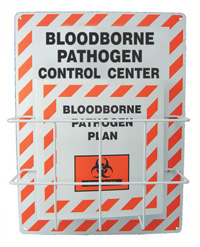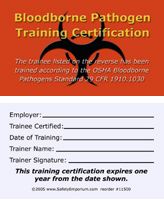| The Home page of ILPI's Safety Data Sheet (SDS) Resource, the leader in SDS information since 1995! | |
| The history and philosophy behind this resource. | |
| A curated collection of books and reference materials concerning Safety Data Sheets and closely related topics. | |
| Paste your plain text SDS into the SDS-Demystifier, and it will be converted into a hypertext-enriched document with links to detailed explanations of each key term. | |
| An extensive list of frequently asked questions about Safety Data Sheets including regulations, content, compliance, and more. | |
| A humorous take on Safety Data Sheet jargon. Fill in the blanks on our entry form to generate a personalized Unsafety Data Sheet to share with your coworkers. | |
| Since 1995, we've maintained this massive curated list of the best places to find Safety Data Sheets on the Internet. | |
| You are here! Way more than a glossary, this hypertext-enhanced resource covers hundreds of SDS-related terms and expert knowledge. Each entry includes both the SDS relevance and links to additional authoritative resources. | |
| Archived results of Safety Data Sheet related polls taken by some of our millions of site visitors | |
| The OSHA regulations behind SDS regulations, including the inspection guidelines and over 400 official interpretations letters under the Hazard Communication Standard | |
| Commercial suppliers of SDS authoring and management software as well as cloud compliance services. | |
| Commercial companies that will create SDS's for your specific needs as well as SDS translation companies. |

Safety signs, banners, and scoreboards? Get yours at Safety Emporium!
Definition
A cytotoxin (noun) has a direct toxic or destructive effect on certain cells of the body (usually those of a particular organ). Specific examples include nephrotoxins which damage the kidneys and neurotoxins which damage the nervous system and brain.
Cytotoxic (adjective) relates to cytotoxins and/or their their effects. For example, a "cyctotoxic drug".

Safety Emporium carries bloodborne pathogen compliance centers and related compliance materials.
Additional Information
Many cancer treatments use cytotoxins to kill cancer cells. Cancer cells, by definition, rapidly divide compared to the normal cells in your body. If a doctor administers a cytotoxin, these cancerous cells will die at a much faster rate than the normal cells in your body. If the cancer cells reproduce at just the right rate, and the dose of the anti-neoplastic agent is correctly balanced, a cancer can be beaten without causing too much additional harm to the patient.
An unfortunate side effect of such chemotherapy is that certain healthy and normal cells in the body such as hair follicles and bone marrow normally reproduce at a rapid rate and therefore suffer significant damage from the cytotoxic anti-cancer agent. This is why many people lose their hair or experience impaired immune systems while on chemotherapy. It is also one reason health practitioners must follow strict personal protection protocols to avoid accidental exposure during administration of chemotherapy drugs (another reason is that many chemotherapy drugs are, ironically, themselves carcinogenic).
Cytotoxins are also produced through various disease processes. For example, gas gangrene, diphtheria, and scarlet fever all produce cytotoxins that worsen the effects of the disease.
Books Available
NOTE: We may collect a share of sales or other compensation from the links in the following list:
- "Introduction to the Cellular and Molecular Biology of Cancer, 4th Ed", Paperback, 552 pages, 2005. Estimated price: $80.00. Info and/or order.
- "The Principles of Clinical Cytogenetics, 3rd Ed", Hardcover, 569 pages, 2013. Estimated price: $299.99. Info and/or order.
- "Analysis of Cytotoxicity of Anticancer Drugs", Paperback, 156 pages, 2008. Estimated price: $93.07. Info and/or order.
- "Cytotoxins and Immunotoxins for Cancer Therapy: Clinical Applications", Hardcover, 240 pages, 2004. Estimated price: $13.41. Info and/or order.
- "Cytotoxic Payloads for Antibody–Drug Conjugates (ISSN) 1st Ed", Hardcover, 2019, 502 pages. Estimated price $237.00. Info and/or order.
- "Approaches to photo activated cytotoxins: Anticancer complexes", Paperback, 328 pages, 2011. Estimated price: $112.00. Info and/or order.
- "Pick Your Poison: How Our Mad Dash to Chemical Utopia is Making Lab Rats of Us All", Hardcover, 256 pages, 2011. Estimated price $16.98. Info and/or order ILPI recommended.
SDS Relevance
The Safety Data Sheet of a substance with cytotoxic hazards should list this under Section 2 (Hazard(s) identifications) as well as Section 11 (toxicological information). Other sections of the SDS will tell you how to protect yourself with PPE, proper storage, spill procedures and more.
Avoid all use and contact with cytoxic agents whenever possible. If you must use them, use engineering controls such as a fume hood, biological safety cabinet, or cytotoxic cabinet. Always use proper personal protective equipment such as gloves and lab coats. If you are administering cytotoxic drugs to a patient, be sure you are in full compliance with the OSHA Bloodborne Pathogens Standard, 1910.1030 and other appropriate regulations, policies or procedures. Best practice guidelines for practitioners is provided under Further Reading below.

Get your bloodborne pathogen safety materials from Safety Emporium.
Further Reading
- Safe handling of cytotoxics: guideline recommendations from Curr Oncol. 2015 Feb; 22(1): e27-e37.
- Safe handling of cytotoxic drugs in the workplace at the UK's Health and Safety Executive.
- Guidelines for the Use of Cytotoxic or Chemotherapeutic Drugs at CalTech.
- Controlling Occupational Exposure to Hazardous Drugs at OSHA.
- Complications of cytotoxic therapy, Part 1 from Australian Prescriber 1995, 18, 65-7.
- Cytotoxic drugs or cytostatics at the Cancer Society of Finland.
See also: carcinogen, carcinoma, malignant.